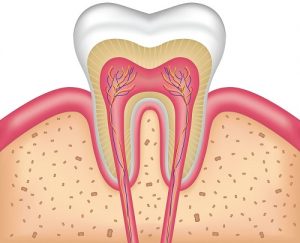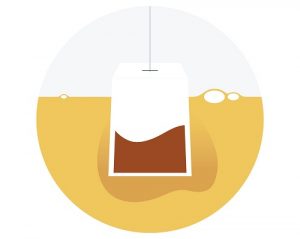Root Canal Pain Relief Options for Recovery at Home
A root canal procedure repairs a tooth which has been infected or severely damaged. The cause of the damage to the tooth is usually related to a cracked tooth or deep cavity. The procedure itself includes removing the area of the tooth which is damaged (this is called the pulp), cleaning it entirely, and then refilling it. Once the tooth is refilled it is sealed.
If you suspect that you need a root canal, you should immediately see your dentist. Your dentist will go through a procedure to determine if you do need a root canal by completing an X-ray to examine the tooth and the possible decay.

If you do require a root canal, your dentist will book an appointment for the procedure. On the day of the root canal, your dentist will first administer anesthesia to your tooth and perform a pulpectomy, which is when an opening in your root is created. Once the opening is made, the dentist removes the diseased pulp. After the diseased pulp is removed, the dentist fills it to seal it off.
Once the procedure is completed, your dentist will walk you through aftercare treatment and what you need to do to care for your teeth. You will likely be in some pain or discomfort and your dentist will walk you through various aftercare routines as well as how to deal with the pain.
After the Procedure
It is very important that you take good care of your teeth after a root canal has been completed. You will likely have to schedule a visit with your dentist after the procedure to perform an X-ray on your tooth to ensure that the infection is gone. It is also important that you maintain a consistent oral care routine after the procedure and ensure that you are brushing your teeth twice a day.
You will likely be in some pain and discomfort—and severe pain in some cases—after the procedure and will possibly require anti-inflammatory medication. Your doctor may or may not prescribe you something to ease the pain. If you do not receive anything for pain, there are many root canal pain relief options at home that you can use which will help relieve the pain and swelling after the procedure.
“Root canal treatment has a 95% success rate, in most cases. Without it, a damaged nerve is 100% likely to be lost, so it’s usually a good option to consider.”
At-Home Pain Relief Options
Ice Pack or Cold Compress
Pain after root canal treatment, endodontic treatment for an infected tooth, or other dental procedure can be quite severe. Applying an ice pack or cold compress on your check for five minutes at a time after your procedure will significantly help reduce pain and swelling. You can also place a cold washcloth or even a bag of frozen vegetables on the side of your mouth which has had the procedure. If the swelling and pain don’t subside, continue to repeat the process every 15 minutes or so until you feel relief.
Liquid or Soft Food Diet
Chewing can be painful on your teeth and irritate your gums after your root canal. Stick to a soft food or liquid diet consisting of soup and other soft foods like yogurt. This will help alleviate and prevent any additional pain and also help your tooth heal faster.
Gargle with Saltwater
Saltwater can help ease inflammation and soothe your irritated gums. Saltwater also works very well to minimize the risk of contracting a bacterial infection.
12 hours after your procedure, mix one teaspoon of salt with a cup of warm water and gargle it in your mouth for about one minute. Do this three or four times a day until you are no longer feeling pain, swelling or discomfort.
Ibuprofen
Your doctor will likely recommend a dose of ibuprofen to help with pain and inflammation after your root canal treatment. Ibuprofen provides pain relief and also can greatly help reduce swelling around your gums and the treatment area. In the event that your dentist does not prescribe you any type of painkiller, ibuprofen can really help ease the pain and reduce any potential swelling.
Orajel
You can buy Orajel at any pharmacy to help ease your post-root canal pain. Orajel is a benzocaine which can temporarily numb your gums and any inflamed tissues. It can help relieve your root canal pain and also ease your discomfort.
Pillow Elevation
Before going to sleep, elevate your pillow to help reduce possible bleeding. Sleeping with an elevated pillow will also help ease gum and nerve pain and direct blood flow in one direction.
Tea Bags
Tea bags are great to use as a warm compress to help relieve pain from a tooth canal treatment. This is because tea leaves have properties which can help reduce swelling and ease the pain. After using a tea bag, wring it out (be sure that there are not any holes in it) and place it on the affected area. This should help relieve the pain and swelling.
Hydrogen Peroxide
Hydrogen peroxide can help kill bacteria and disinfect, providing you relief from pain and also reducing inflammation. Mix one teaspoon of warm water and two teaspoons of hydrogen peroxide and swish it in your mouth for one or two minutes and spit it out. Repeat this a few times a day or any time you feel pain.
Post-Treatment Care
After your root canal procedure, it is your responsibility to maintain a regular oral health care routine and to take care of the affected area. You will likely have a few follow-up appointments after the procedure so that your dentist can make sure the affected area is healing and there are no complications. You may also have to book an appointment for a crown.
After the treatment is done and you have gone to all of the follow-up appointments, it is your responsibility to take care of the affected area. Your oral health routine should include flossing, brushing and going to regular cleanings and checkups. If you begin to feel any pain or swelling in the affected area once it has healed, be sure to book an appointment with your dentist the moment it happens.
A root canal is often seen as an extremely painful procedure, and dealing with pain after the procedure can be difficult. With a strict oral health regimen and the right pain relief options at home, your post-root canal treatment can go flawlessly, painlessly, and easily.
Relate Posts to Read:
Fractured Tooth Root Symptoms, Treatment, and Recovery
Medically Fact-Checked & Written by Our Dental Editorial Team
You can read more about our editorial guidelines by clicking this link and learn more about the Emergency Dentists USA editorial team here.








